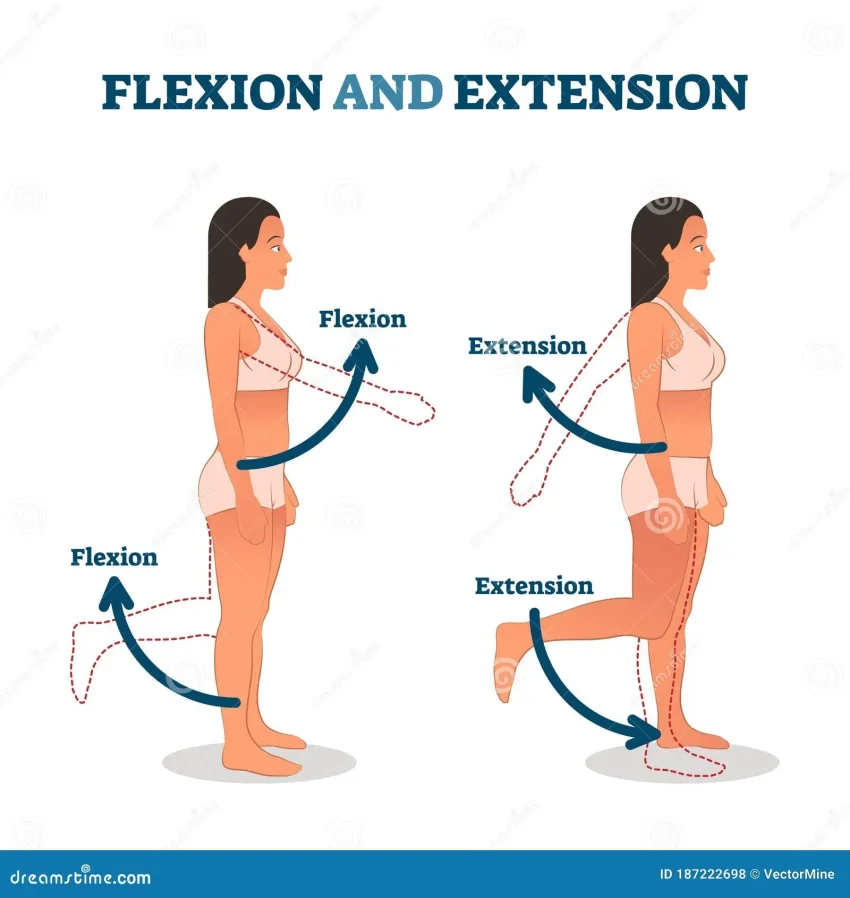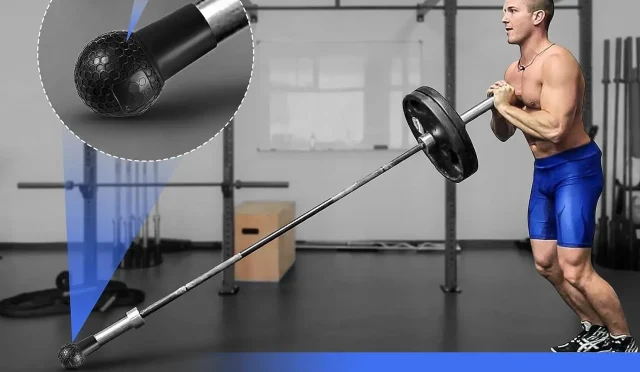Flexion and Extension: Key Concepts for Effective Workouts
Understanding flexion and extension forms the cornerstone of effective workout techniques, especially in the fitness community. Flexion refers to the action of decreasing the angle at a joint, while extension involves increasing it, both of which are crucial for various exercises. The importance of flexion and extension cannot be overstated, as they dictate the movements involved in biceps curls, leg curls, and triceps kickbacks, for instance. Differentiating between flexion vs extension is key to maximizing your workout performance and results. Incorporating both concepts into your routine not only helps target the appropriate muscle groups but also reinforces the overall strength and flexibility of your body.
When we delve into the mechanics of human movement, terms such as bending and straightening become central to our understanding of physical performance. The actions of flexing and extending joints play pivotal roles in determining how effectively we execute various exercises. Whether it’s engaging in contraction to pull a weight closer or extending to push it away, these motions are foundational in workout regimens. Recognizing the nuanced differences between strategies that rely on these opposing actions can greatly enhance both strength training and rehabilitation efforts. By prioritizing a balance of bending and straightening movements, individuals can achieve optimal fitness outcomes.
Understanding Flexion in Workout Techniques
Flexion refers to the movements that reduce the angle at a joint, allowing your body to perform various exercises that target specific muscle groups effectively. For instance, when executing a biceps curl, the motion of your forearm moving closer to your shoulder demonstrates flexion. This not only strengthens the biceps but also enhances functional movement patterns in daily life. By understanding the intricacies of flexion, you can implement isolation techniques that maximize muscle engagement, thereby improving your overall workout efficiency.
Incorporating flexion-focused exercises into your routine is essential for balanced muscular development. Exercises like leg curls and sit-ups not only foster strength but also contribute to core stability, which is fundamental for athletic performance. It’s crucial to remember that flexion movements should be complemented with extension movements to maintain joint health and prevent injury. Hence, understanding the flexion definition helps in better planning your workout regimen to achieve optimal results.
The Role of Extension Exercises in Strength Training
Extension exercises are pivotal in strength training, aimed at increasing the angle at a joint and promoting muscle lengthening. Incorporating triceps kickbacks and leg extensions into your workouts helps build strength in the triceps and quadriceps, offering a comprehensive approach to muscle development. These movements not only focus on muscle growth but also aid in stabilizing joints, preventing common injuries that stem from undertraining specific muscle groups.
Furthermore, emphasizing extension during workouts is beneficial for postural alignment and functionality. Many gym-goers often neglect their triceps in favor of biceps, yet including extension exercises balances out your arm workouts, creating a more proportionate physique. To maximize the effectiveness of these exercises, consider varying the tempo of your reps—slower movements during the extension phase can lead to greater muscle activation and enhanced strength gains.
Flexion vs Extension: Knowing the Difference
Understanding the difference between flexion and extension is crucial for targeting muscle groups effectively. Flexion is characterized by the bending movement which typically occurs in exercises that involve bringing two body parts closer together. In contrast, extension is about straightening the joint, moving those parts further apart. This fundamental understanding can transform the way you approach your workouts, allowing for enhanced focus on both joint movements.
In practical terms, exercises like squats demonstrate both flexion and extension, but attendees should focus on the cue that emphasizes strength building—driving upwards into extension as you return to a standing position. This awareness not only optimizes your workout but also helps in your ability to differentiate which muscles are engaged during various movements, streamlining your training sessions.
Importance of Flexion and Extension in Fitness Routines
Incorporating both flexion and extension movements into your fitness routine is indispensable to achieving well-rounded strength and fostering injury prevention. When exercising, aiming for a balance between these two types of joint movements ensures that muscle groups are developed evenly, minimizing strain on your joints. A routine that includes both biceps curls (flexion) and leg extensions (extension) is an optimal way to prepare your muscles for dynamic movements.
By realizing the importance of these contrasting movements, you can better tailor your workouts to harness the full potential of your body. Taking the time to assess and program exercises based on flexion vs extension will not only improve your physical performance but also enhance muscle endurance, ultimately leading to better results in strength and athleticism.
Integrating Flexion and Extension Exercises for Optimal Gains
Integrating both flexion and extension exercises in your workout regime amplifies your muscle growth and functional performance. A balanced approach—pairing related movements like bicep curls with triceps kickbacks—ensures that you’re strengthening opposing muscle groups. Not only does this promote greater muscle symmetry, but it also enhances overall joint health by reducing the risk of injuries commonly associated with muscular imbalance.
Moreover, focusing on the eccentric phase of flexion and extension can significantly improve your gains. Slow, controlled movements during the lowering part of an exercise increase the time under tension for each muscle group. For instance, lengthening the biceps curl’s lowering phase can result in more dramatic strength gains and improved muscle hypertrophy, making your workouts more efficient in the long run.
Common Misconceptions About Flexion and Extension
Despite the clarity that comes with understanding flexion and extension, many still have misconceptions about these movements. For example, some believe that only compound movements incorporate both flexion and extension, while in reality, isolation exercises also demonstrate these principles. Having a solid grasp of how these movements work together can help you avoid common mistakes, leading to more productive training sessions.
Additionally, many individuals overemphasize either flexion or extension in their routines, often leading to one side being much stronger than the other. Recognizing that both are necessary for comprehensive strength and fitness will help ensure your workout efforts are balanced, thus promoting better overall athletic performance and reducing the risk of injury related to muscular imbalances.
Training Techniques: Balancing Flexion and Extension
When planning your strength training regime, employing training techniques that effectively balance flexion and extension is crucial. A well-structured program should include exercises targeting both movements, which can maximize strength gains and improve your muscle function across different activities. This balance not only enhances individual muscle groups but also contributes to better overall body mechanics.
Additionally, combining flexion and extension movements during superset training can save time and push your muscles to new limits. For example, you can transition from a leg curl (flexion) to a leg extension (extension) without a significant rest period. This method challenges your muscles differently and promotes efficient muscle fatigue, ultimately enhancing your strength outcomes throughout the training process.
Effective Workout Techniques Using Flexion and Extension
Utilizing effective workout techniques that incorporate both flexion and extension can take your fitness to the next level. By strategically including exercises that highlight each movement—like alternating between push-ups (extension) and plank variations (flexion)—you create a dynamic routine that engages multiple muscle groups efficiently. This approach keeps workouts fresh while promoting balanced muscular development.
Additionally, focusing on how to structure your exercises around these movements can enhance your workout effectiveness. For instance, training based on major muscle groups while integrating both flexion and extension movements provides a comprehensive strategy for muscle growth. Emphasizing both in your techniques not only maximizes your potential but also encourages long-term adherence to a balanced fitness regimen.
Remembering the Basics: Flexion and Extension
Returning to the basics of flexion and extension can help clarify their roles in your workout routine. As you explore various exercises, always refer back to these concepts to ensure you’re targeting the right muscle groups in the intended ways. The simple maxim—’flexion is forward, extension is backward’—can guide you in selecting appropriate exercises that align with your fitness goals.
Moreover, continually reminding yourself of the significance of these movements can foster a better understanding of your body’s mechanics. Whether you are new to working out or a seasoned fitness enthusiast, integrating this knowledge into your training will not only improve your technique but also lead to enhanced performance and results in your fitness journey.
Frequently Asked Questions
What is the definition of flexion and extension in fitness?
Flexion refers to the action of reducing the angle at the joint, bringing two body parts closer together. Extension, on the other hand, increases the angle at the joint, moving body parts apart. Understanding these terms is crucial for structuring effective workouts.
What are some common extension exercises you can incorporate into your routine?
Common extension exercises include triceps kickbacks, leg extensions, and back extensions. These movements focus on lengthening the muscle and increasing joint angles, which complement flexion exercises for balanced training.
How does flexion vs extension affect your workout results?
Flexion vs extension is relevant because most exercises emphasize one of these movements. Incorporating both flexion and extension in your workouts helps ensure balanced muscle development and reduces the risk of injuries.
Why is the importance of flexion and extension considered in workout routines?
The importance of flexion and extension in workout routines lies in promoting balanced strength and muscle growth. Including both types of movements prevents muscle imbalances and enhances overall functional fitness.
What workout techniques can enhance the efficacy of flexion and extension movements?
Effective workout techniques include maintaining a balanced number of flexion and extension exercises, emphasizing the eccentric phase of movements, and organizing workouts in supersets to maximize efficiency and muscle engagement.
| Key Concept | Definition | Examples |
|---|---|---|
| Flexion | Reduces the angle at the joint, bringing two body parts closer together. | Biceps curls, leg curls, sit-ups |
| Extension | Increases the angle at the joint, moving two body parts further apart. | Triceps kickbacks, leg extensions, back extensions |
| Importance of Balance | Equal inclusion of flexion and extension in workouts minimizes injury risk and promotes even strength. | Combine biceps curls (flexion) with triceps kickbacks (extension) in routines. |
| Eccentric Training | Focus on the lowering phase during exercises to increase muscle growth. | Slower lowering of dumbbells during curls to enhance time under tension. |
Summary
Flexion and extension play crucial roles in optimizing your workouts. Understanding these movements allows you to better target specific muscle groups and improve your overall fitness performance. By combining and balancing flexion and extension exercises in your routine, you can effectively enhance strength, build muscle, and minimize the risk of injury, ultimately leading to superior results in your workout regimen.
#FlexionExtension #WorkoutAnatomy #ExerciseScience #FitnessEducation #StrengthTraining








